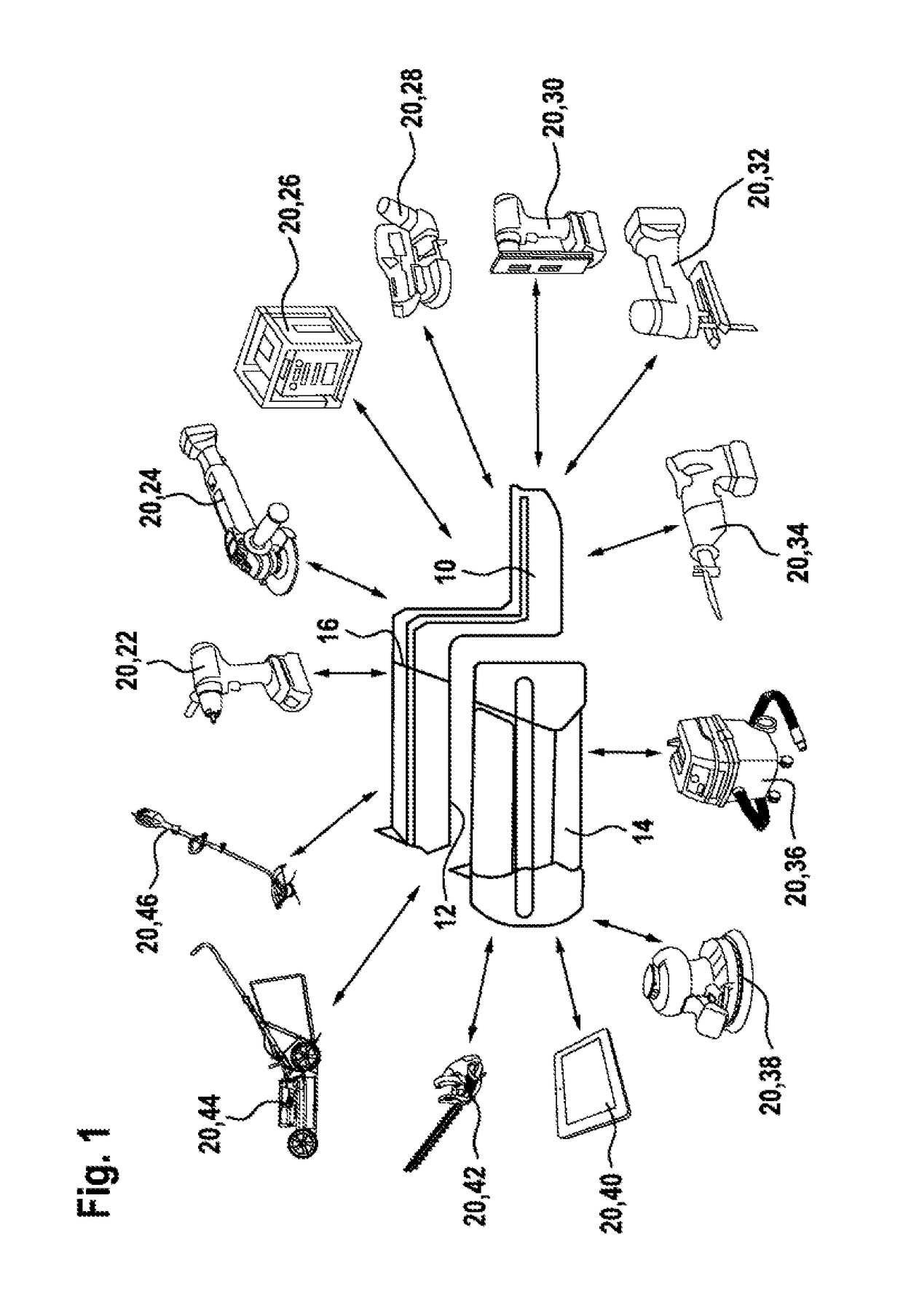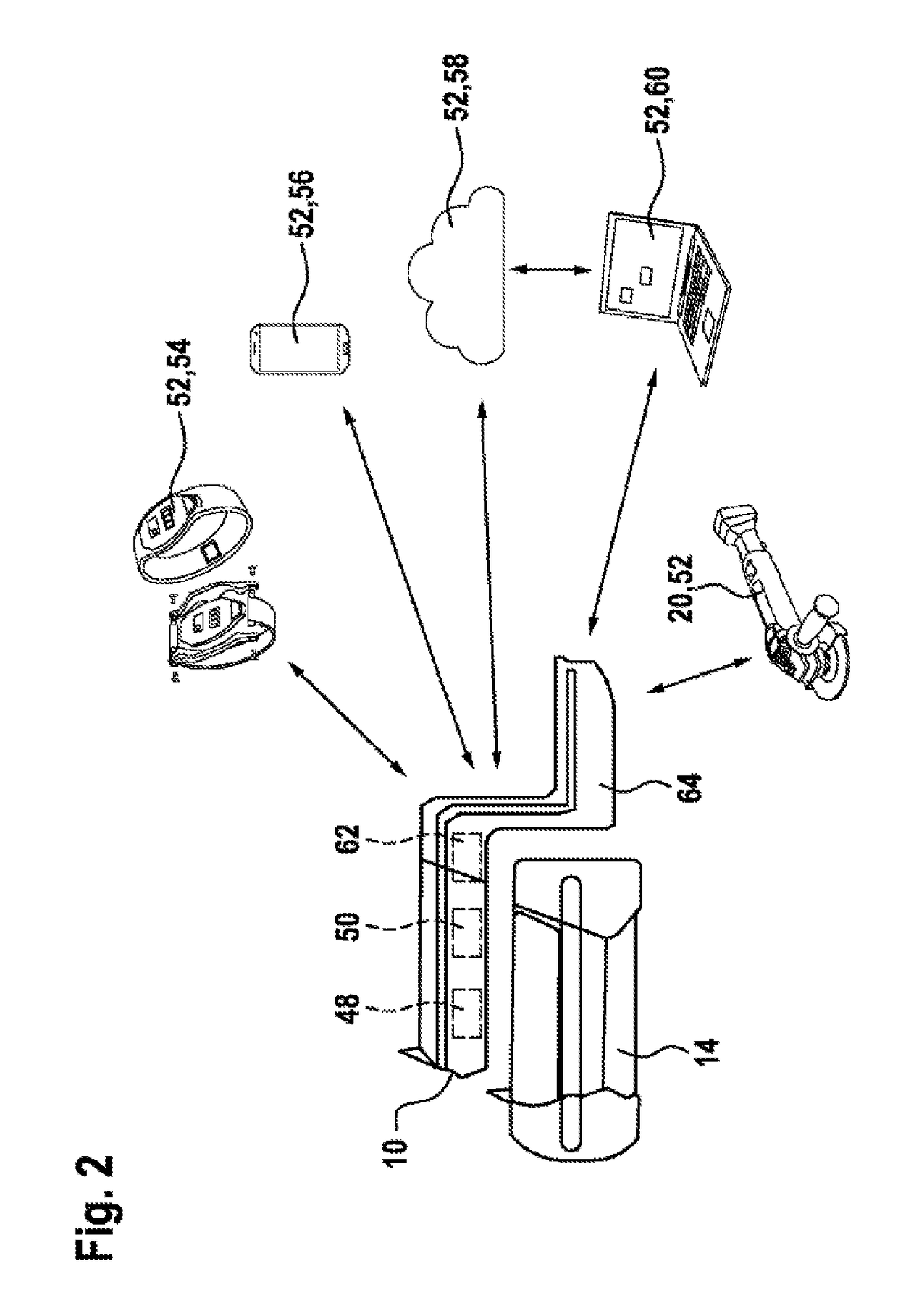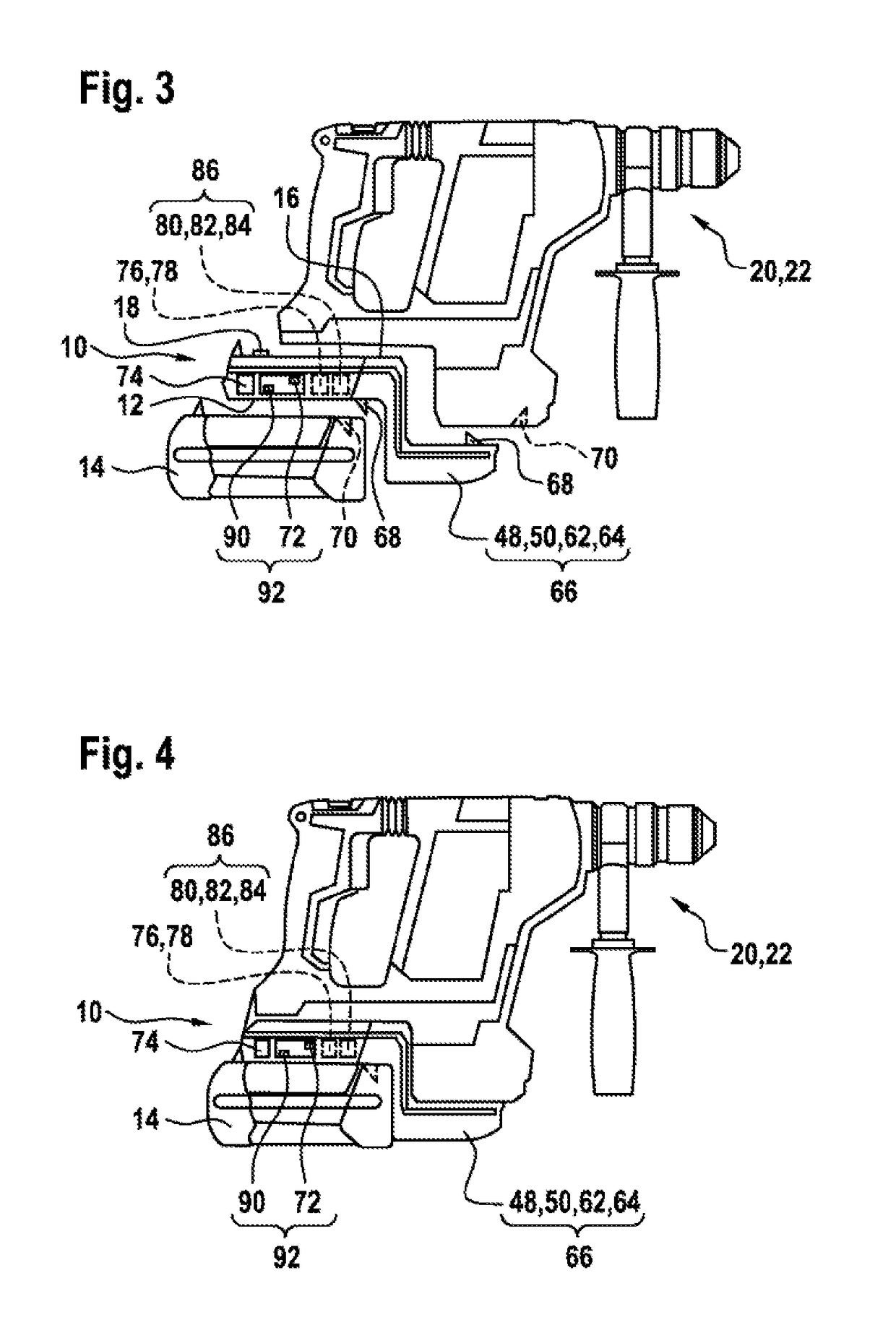Anti-Theft Module for a Rechargeable Battery-Operated Electric Machine Tool, and Rechargeable Battery-Operated Electric Machine Tool Comprising an Anti-Theft Module
- Summary
- Abstract
- Description
- Claims
- Application Information
AI Technical Summary
Benefits of technology
Problems solved by technology
Method used
Image
Examples
Embodiment Construction
[0030]FIG. 1 depicts a first exemplary embodiment of the anti-theft module 10 according to the present invention. Said module may, on the one hand, be connected to a replaceable battery 14 via an accommodation device 12, and on the other hand, to a rechargeable battery interface 18 (compare, for example, with FIG. 3) of a battery-operated electric machine tool 20 via an interface 16. As already initially mentioned, the battery-operated electric machine tool 20 may, for example, be designed as an impact wrench, an impact drill or a hammer drill 22, an angle grinder 24, a construction site radio 26, a polishing machine 28, a drywall screw gun 30, a jigsaw 32, a reciprocating saw 34, a vacuum cleaner 36, a milling machine 38, a remote control 40, a hedge trimmer 42, a lawn mower 44, or a trimmer 46. Basically, all types of battery-operated electric machine tools are conceivable for using the anti-theft module 10 according to the present invention. FIG. 1 is therefore not to be understo...
PUM
 Login to View More
Login to View More Abstract
Description
Claims
Application Information
 Login to View More
Login to View More - R&D
- Intellectual Property
- Life Sciences
- Materials
- Tech Scout
- Unparalleled Data Quality
- Higher Quality Content
- 60% Fewer Hallucinations
Browse by: Latest US Patents, China's latest patents, Technical Efficacy Thesaurus, Application Domain, Technology Topic, Popular Technical Reports.
© 2025 PatSnap. All rights reserved.Legal|Privacy policy|Modern Slavery Act Transparency Statement|Sitemap|About US| Contact US: help@patsnap.com



